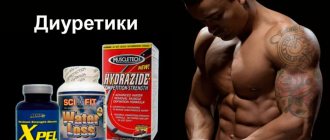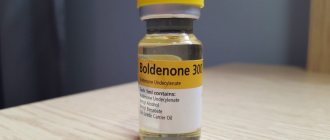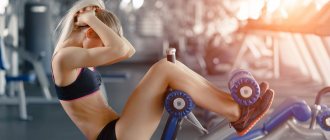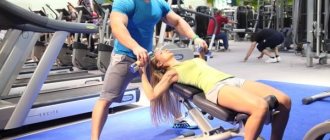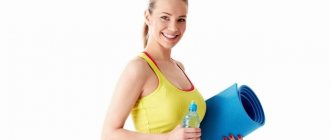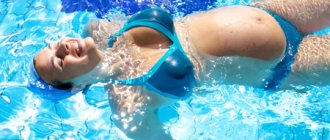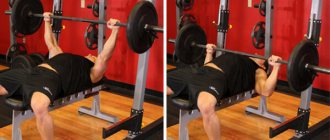In the 1920s, trainer Joseph Pilates introduced an effective set of exercises to America that was supposed to help injured athletes and dancers recover and return to their previous physical shape. Since then, the direction of Pilates has emerged, which has gained enormous popularity in the last 10-15 years. According to statistics, in the USA alone the number of Pilates instructors exceeds 11,000 people.
We offer you all the most useful and up-to-date information about Pilates: advantages and disadvantages, features of classes, effectiveness for weight loss, as well as a ready-made set of Pilates exercises and useful tips for those who are just starting to practice Pilates.
Pilates: features
Pilates exercises are especially worth paying attention to for those who cannot engage in shock loads due to problems with joints and blood vessels. Also, regular Pilates classes help get rid of back problems, straighten the spine, improve posture and strengthen the muscle corset.
Benefits of Pilates:
- Strengthening muscles and skeletal system
- Improving body quality
- Relief from back and lower back pain
- Relief from joint pain
- Prevention of musculoskeletal injuries
- Formation of beautiful posture
- Improving joint flexibility and mobility
- Improved coordination
- Relief from anxiety, insomnia and depression
- Development of concentration
- Anyone can do Pilates
We offer you 60 Pilates exercises for problem areas, which will mainly help you work on the muscles of the abdomen, back, thighs and buttocks. All exercises are divided into two large groups: for beginners and for more advanced ones. This selection includes the main basic Pilates exercises, as well as the most popular and effective modifications. This complex will help you effectively and efficiently work on all muscle groups.
For both beginners and advanced, we have divided Pilates exercises into three groups:
- Exercises for the abdomen, back and muscle corset
- Exercises for hips and buttocks
- Upper body exercises
As you understand, the division is very conditional. For example, many abdominal and back exercises also work the muscles of the legs and buttocks. Or in almost all exercises for the upper body, not only the muscles of the arms and shoulders are involved, but also the stomach, buttocks and legs.
Since there are a lot of exercises, and it is not possible to remember them after just one reading, we recommend that you bookmark this article (to bookmark, use the keyboard shortcut CTRL+D) to return to the selection of Pilates exercises at the right time.
Features of performing Pilates exercises:
- When performing Pilates exercises, we try to straighten our back, straighten our shoulders and pull them back. We keep the body taut and collected, it should not be relaxed.
- In the plank position, we do not bend, do not lower or lift the pelvis up. The body should form one straight line.
- When performing Pilates exercises on the back, the lower back should not come off the floor and bend; we try to press it to the floor. We pull the stomach towards the spine, without relaxing it.
- During classes, we do not help ourselves with our neck, we only work with our core muscles. The back of the head stretches back and up.
- In Pilates, exercises are performed for quality, not quantity and speed. Repeat each exercise no more than 15-20 times, but do it slowly and thoughtfully.
- When doing Pilates you should be focused on the muscles and how they work. To begin with, do not do Pilates for more than 20 minutes so that your attention does not wander, as happens during a long workout.
- It is not recommended to do Pilates during exacerbations of diseases of the musculoskeletal system.
How to quickly forget about pain in the spine and neck
If you start doing Pilates. The pain may go away in a week. For more serious pathologies, such as radiculitis, osteochondrosis, hernia, a longer time will be required depending on:
- From human physiology.
- Stages of the disease.
- The presence of other diseases.
But if you don’t stop exercising, the effect will definitely be achieved and you will forget about back and neck pain forever.
But, as you know, it is better to prevent the disease. To do this, you should start doing Pilates right now. While you are not yet bothered by discomfort and pain in the spine and neck.
Choose among the best clinics based on reviews and the best price and make an appointment
Show all Moscow clinics
Pilates Workout Plan for Beginners
Just starting out with Pilates? Then we offer you a ready-made lesson plan with a basic set of simple Pilates exercises. If an exercise doesn't work for you or causes discomfort, skip it or modify it to an easier version.
- Hundred: 30 times
- Twisting: 15 times
- Leg lowering: 15 times on each leg
- Single leg extension: 10 times on each leg
- Back raise with arms raised: 10 times
- Swimming: 10 times on each side
- Raising arms and legs on all fours: 10 times on each side
- Glute bridge: 15 times
- Leg raises on all fours: 15 times on each leg
- Diamond leg raises: 15 reps on each leg
- Side leg raises: 10 reps on each leg
- Leg raises for inner thighs: 10 times each leg
- Plank: 30 seconds
- Mermaid: 10 times on each side
- Reverse plank: 10 times on each leg
On average, this workout will take you about 20 minutes. The exercises can be interchanged, but this variation represents the most traditional arrangement of exercises in Pilates.
We definitely recommend reading:
- Top 25 exercises for buttocks and legs without squats, lunges and jumps
- Top 50 exercises for abdominal muscles: lose weight and tone your abs
- Top 20 exercises to improve posture and straighten your back
Important Tips
In order for callanetics training to be beneficial for the body and not cause harm to health, you should adhere to the following rules:
- do those exercises that the muscles will allow you to perform, do not force an unprepared body to perform active loads;
- rest more often at the beginning of the lesson;
- if there is a feeling of fatigue, does not strive to set records and do 50 required repetitions, you can limit yourself to 20, but performed at full strength;
- when studying at home, carry out all actions in front of the mirror in order to see your own reflection and control the correctness of the process;
- do not strive to hold your breath, even during periods of maximum stress on the body;
- to fully supply the body with oxygen, you should breathe as usual, without speeding up or slowing down;
- practice in silence; if music is playing, there is a high risk of getting lost, adjusting the exercises and your own breathing to its tempo;
- do not be afraid of an unexpected weight gain, instead of losing it: sagging muscles, after full-fledged exercise, will be replaced by an increase in their strength, which leads to an increase in body weight (for the same reason, the volume of the abdomen may increase).
The decision to start practicing callanetics should not be spontaneous. Having taken it, a person is obliged to seek preliminary consultation with the doctor observing him and receive recommendations regarding the possibility of attending such training.
If necessary, undergo examinations to exclude possible somatic pathologies. This approach guarantees full results and high-quality muscle corset training.
Introduction[edit | edit code]
Currently, Pilates has been developed as one of the areas of fitness. Pilates can be practiced by people of completely different ages and genders, as well as with different levels of physical fitness.
It had its heyday in the mid to late 1990s, when Pilates went from being a little-known exercise system with a small following to becoming a mainstream fitness practice that is now practiced by many people. Scenes of Pilates exercises suddenly appeared in Hollywood films and television advertisements, cartoons and comedy shows. Doing Pilates has become as common as walking into a coffee shop and ordering a triple café latte with soy milk.
How and why this happened still remains a mystery. Nevertheless, few would deny that the unprecedented growth of those actively involved in this type of fitness is an extraordinary phenomenon. If in 2000 their number in the United States was about 1.7 million people, then by 2006 it had increased to 10.6 million. The same thing is observed in other countries.
To understand the essence of Pilates, you need to know the history of its origins. Joseph Pilates was born on December 9, 1883 in Germany near Dusseldorf; died October 9, 1967. He created a system of exercises that he called controlology. This method was developed by him primarily for men, and initially it was used by representatives of the stronger sex, although, as a rule, women were involved in the promotion and implementation of this system for many years. He was always absolutely confident that his approach to promoting overall health would resonate with both the general public and doctors. But, unfortunately, Pilates was not destined to see with his own eyes how his dream came true.
Fortunately, some of the first students of Pilates and his wife Clara, whom he met in 1926 during his second trip to the United States and who remained his faithful assistant throughout his life, survived the teacher and were able to pass on his experience to people. Representatives of the first generation of Pilates teachers who studied directly with Joseph and Klara played an extremely important role in the development and dissemination of this method. Rael Isakowitz has been practicing Pilates for the past 30 years under the guidance of a unique group of such people. Of particular note is Kathleen Stanford Grant, who played the most significant role in his formation and development of his teaching style.
Joseph Pilates did not leave behind extensive written material for future generations. Rare archival photographs, films and recordings are of great value. However, the secrets of training continue to be passed down from one generation of instructors to the next, verbally and using a universal language of movement. Pilates has written two short books. One of them, “Returning to Life with Controlology,” became the main source on which “Pilates Anatomy” was based. Our goal in Pilates Anatomy has been to distance ourselves from different styles and schools of teaching, as well as individual approaches to Pilates. The decision to take as a basis exactly those exercises that are described in the publication of the founder of this direction was of great importance. Our work was to become as universal as anatomy itself. Using the Pilates book brings this work as close to the original source as possible so that it can serve as a bridge between different approaches and become a unifying factor for many Pilates professionals and enthusiasts.
Pilates is extremely common today. It is taught in private studios, educational institutions, fitness centers and medical institutions. It is used by both professional athletes and disabled people. Age categories range from kindergarten age children to people in their nineties. Is there another form of exercise that has such a wide following? This is, perhaps, the reason for the popularity of Pilates.
Anatomy of Pilates was written by two authors, each of whom brings their own unique experiences to the book. For the past 30 years, Rael Isakowitz has studied Pilates extensively, working with the most respected first generation trainers. He is the founder of one of the leading Pilates centers and for 21 years he has directed the work of several internationally recognized organizations promoting Pilates. Thanks to his vast knowledge and experience, he is invited to give lectures around the world. Karen Clippinger has thirty years of experience teaching anatomy at leading universities. She has become renowned for her ability to clearly explain complex anatomical concepts and has lectured at many prestigious forums. Karen Clippinger has spent the last 17 years bringing Pilates into rehabilitation and educational settings, making her a leader in the field. Both of these authors have a rich scientific background, as well as practical experience in the field of dance and sports. In total, they have 60 years of research, practice and teaching behind them. Their philosophical views are very close. Rael and Karen crossed paths more than 17 years ago, and since then they have been engaged in a lively, spiritual and always professional dialogue.
Trips around the world, presentations and seminars allowed them to gain insight into the extent and prospects for the spread of Pilates from China to Russia, from Australia to South Africa, from the USA to Europe. There are not many countries left in the world today where Pilates is unknown. The authors hope that this book will serve as a tool to unite Pilates professionals and enthusiasts into an international community speaking one common language.
Today's trends in Pilates require that professionals have a solid knowledge of anatomy. This book will benefit not only them, but also everyone interested. The approaches contained in it are suitable for any school and direction of Pilates, as they provide anatomical descriptions of basic exercises that can be easily applied to their various variants and modifications. The book will be useful for people who are just starting to practice Pilates, as well as specialists, in particular physiotherapists and instructors of therapeutic medicine. This publication makes extensive use of illustrations that show the muscles being worked, provides lists of the main muscles involved in various exercises, as well as advice on performance techniques taking into account the requirements of anatomy, which makes it possible for exercisers with a wide range of training levels to find useful information in it. . The aim of the book is to ensure that Pilates classes are built on a foundation of solid anatomical knowledge. In this case, they will be absolutely safe and will bring you joy!

